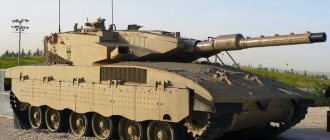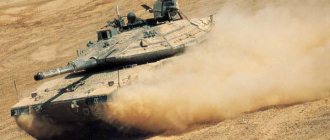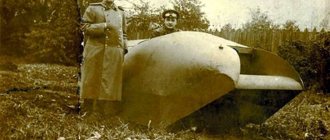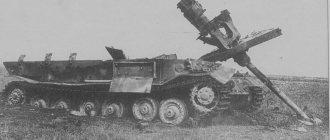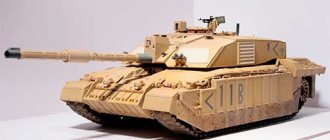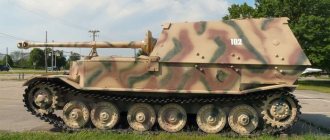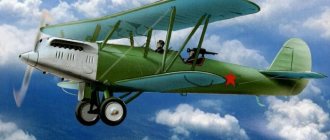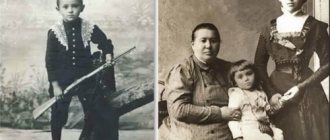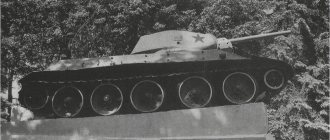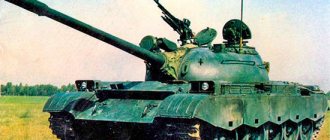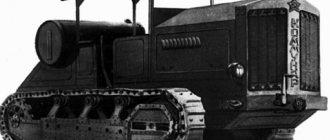- Update date: 18 Sep 2018
- Tested on patch: 1.1
- Current version: 17.9
- Author: DontWorry
- Total marks: 13
- Average rating: 4.31
- Share:
Please rate the material:
Latest update information:
- Trials have been extended.
Important: A new patch has been released and the installation folder for mods will change, now they need to be installed in the WOT/res_mods/1.6.1/ and WOT/mods/1.6.1/ folders. Most of the mods are working, just move them to the 1.6.1 folder, if any of the mods still doesn’t work, wait for it to be adapted on our website.
Download links are at the very bottom of the page. >>
HARD CHEAT Mod Pack includes dozens of different mods, most of which are cheats. They are prohibited by the rules of the game, but in recent years they have gained enormous popularity among the tank community, because they provide a lot of advantages over their opponents.
Composition of HARD CHEAT Mod Pack Merkava for 1.5.1.1
- Two aimbots with new capabilities in auto-aim mode. This includes tracking a target, taking cover, preemption, and much more.
- Several types of X-rays. They do not differ much, because the principle of operation is the same - to make the contours of enemy equipment visible through the obstacle.
- Smart repair of modules, automatic treatment of the crew depending on the importance of the tanker, and a standard fire extinguisher that will work like a premium one.
- Different types of colored tracers.
- Various options for turning off foliage, from transparent vegetation in sniper mode to completely turning it off, including tree crowns.
- Shadow is a mod that leaves his silhouette with the name of the tank at the opponent’s last location.
- Show enemy cooldowns using timers above markers.
- Red balls are an old modification that adds a red mark at the firing point of an unlit self-propelled gun.
- Lasers from barrels.
Legal mods have also been added to the Hard cheat assembly for 1.5.1.1; the authors of the modpack tried to find only the most necessary works of modmakers.
- Showing the direction of opponents, the color of the icon will be different, depending on whether fire on the enemy is possible or not.
- Battle Assistant, a must-have mod for all artillery players, changes the aiming mode to isometric.
- Efficiency calculators, different options are used, for example, EFF and WN8. A minimalistic damage log is also added.
- Strength points of two teams.
- Removing fog from the battlefield will add a few frames to weak PCs and improve the ease of aiming at distant enemies.
- Zoom mod, aka Commander camera.
- Counter of tanked damage.
- Showing the conditions of the LBZ and the progress of their implementation.
- Fast treatment of the crew and smart repair of modules.
In addition to useful cheats, the installer turned out to be very functional, with its help you can clear the client of previously installed mods, remember installation parameters, make a backup copy of the res_mods directory and reset the game client settings.
Application in practice
The Merkava made its debut in combat in 1982, during the war in Lebanon. At the beginning of June, two hundred of these tanks took part in Operation Peace in Galilee. True, the first planned battle, in which they were supposed to confront the new Syrian T-72s, never took place. There are many colorful stories on the Internet about the massacres inflicted by the “seventy-two” on Israeli vehicles, but in fact, the Merkavas simply did not have time to arrive at their positions - the Syrian T-72s in that battle were opposed by light unarmored jeeps with TOW anti-tank guided missiles from the combined division “Koah” Yossi."
Ironically, the first contender for the destruction of the Merkava was the Israeli Magach (Patton). On June 9, one of the Merkavs of the 198th battalion was shot down by the Syrians near the village of Ain-A-Tina, and then mistakenly fired upon by tanks of another Israeli battalion. In general, in this operation it was “friendly fire” that accounted for a fair portion of the lost Merkavas. For example, on June 10–11, Israeli helicopters fired at their tanks twice—five vehicles were damaged and two crew members were killed.
The largest use of Merkav to date occurred in 2006, during the Second Lebanon War. About 400 vehicles, including the latest Merkava-4, took part in the offensive on territories controlled by Hezbollah. According to Israeli sources, more than a thousand rockets and shells were fired at the tanks, including from the new Kornet anti-tank systems. 45 tanks received a total of 51 hits, with the armor being penetrated in about half the cases. The Israelis irretrievably lost three tanks, and 25 crew members were killed (these statistics do not take into account losses from mines and land mines).
The battles of 2006 once again clearly showed that there are no invulnerable tanks - the only question is how much effort is required to destroy them. And even the best machines, if used incorrectly, will inevitably suffer great losses. Such a negative example was the battle near the dry Saluki River. The Israeli offensive along this route was delayed for two days. During this time, Hezbollah was able to prepare a strong anti-tank defense in the area, but Israeli intelligence was unable to detect these preparations. And although the latest Merkava-4 were allocated for the attack, this did not protect against losses. The tanks were shot at from several directions, three of the 24 vehicles in the attacking column were penetrated, and 7 tankers were killed. Although, given the circumstances of the battle - a reckless tank attack without proper reconnaissance and support - it can be stated that the losses were relatively small: the entire column of armored vehicles could have remained on the sandy slopes of Saluki.
The designers of the Merkava actually managed to achieve their goals: to provide the new tank with maximum survivability, and especially to protect the people in it. As its creator Israel Tal once said: “The tank whose crew is better will win in battle!” The combat path of the Merkav clearly demonstrates that everything was in order with the prioritization of the creators of this vehicle: the key “module” of the tank—an experienced crew—was valued above all else.
"Merkava": how Israeli tanks were modernized
The Israeli Merkava tank (war chariot) is considered one of the best tanks in the world and even entered the symbolic top ten tanks in the entire history of their creation, taking an honorable ninth place there.
During the production of this tank, four main modifications were created: up to the Merkava Mk.4, but the Merkava Mk.5 will no longer be created; the series ended with the fourth model. Instead, Israel is developing a fundamentally new tank with improved fire and protective characteristics, maneuverability and greater speed. The development of the Merkava tank started in 1970, and the reason for this was the UK’s refusal to supply Israel with a batch of Chieftain Mk.1 tanks. After this refusal, the Israeli government set the task of starting the development of a domestic tank. The design work was headed by Major General Israel Tal, who is a combat officer, a participant in all Arab-Israeli wars, and not a design engineer. The first prototypes of the new tank appeared already in 1974, and in 1979 the first four Merkava Mk.1 main battle tanks entered service with the Israeli Defense Forces.
"Merkava Mk.1"
The first model of the Israeli tank “Merkava Mk.1” entered service with the Israeli Defense Forces in 1979.
The design of the tank was based on the desire of the designers to provide maximum protection and survivability for the crew. In this regard, the Merkava differs from classic tanks. It has an increased combat weight compared to comparable MBT models and an unusual layout: the engine and transmission are located in the bow of the hull. At the same time, the location of the engine in front made it possible to free up a significant volume in the rear of the vehicle, where it was possible to provide a manhole for emergency escape from the tank or for evacuating tankers from a damaged vehicle. The stern contains potentially dangerous flammable liquids: fuel and oil. The tank was equipped with a turret with a 105-mm M68 rifled gun, stabilized in two planes, produced in Israel under an American license. The gun's ammunition capacity is 62 rounds and is located in the rear of the fighting compartment in fire-resistant containers. Additional armament consists of a 7.62 mm machine gun coaxial with a cannon, two 7.62 mm FN MAG machine guns on the turret, and a 60 mm mortar.
The crew is 4 people, the commander and gunner are located to the right of the gun, and the loader is to the left. Engine V-shaped four-stroke air-cooled diesel engine with turbocharging, power 910 hp. Speed - 60 km/h.
A total of 250 Merkava Mk.1 tanks were produced (according to other sources - 330), most of them were upgraded to the Merkava Mk.2 level.
"Merkava Mk.2"
In 1983, the next version of the Merkava Mk.2 tank appeared, created taking into account the experience of the 1982 Israeli-Lebanese war.
The tank's armor was strengthened and its cross-country ability was improved. The turret's armor was reinforced using overlay shields with combined armor. Chains with balls suspended at the bottom of the turret stern were used as an anti-cumulative agent. Baskets for property are hung at the stern of the hull, which also serve as anti-cumulative screens. The mortar was moved from the roof inside the tower. Blocks of CL-3030 smoke grenade launchers were installed on the vehicle, one on each side of the turret. The tank received a new Matador Mk.2 control system, consisting of a set of surveillance devices, a two-plane stabilizer with an electro-hydraulic drive, an electronic ballistic computer and a laser sight-rangefinder. Two laser irradiation alarm sensors were installed. The tank's armament did not change.
The tank's engine remained the same, but the transmission was replaced with a more efficient Israeli design.
In October 1984, the first Merkava Mk.2B tanks were manufactured with an improved control system (a thermal imager was introduced into its composition) and reinforced armor for the turret roof.
"Merkava Mk.3"
Serial production of the next version of the Merkava MBT Mk.3 started in 1990.
The main difference from previous versions was the replacement of the tank's main gun. Instead of a 105 mm cannon, like previous models, the Mk.3 received a 120 mm smoothbore gun. The MG251 gun was developed by Israel Military Industries. With the change in the caliber of the gun, the tank's ammunition capacity was correspondingly reduced, amounting to 46 rounds. The tank's protection was increased through the use of modular armor protection for the hull and turret, the modules of which were bolted to the front and side surfaces of the main structure of the hull and turret. The LWS-2 laser warning system was installed on the tank, which included three wide-angle sensors that detected the laser beam from enemy equipment, and a control panel.
The tank received a new Matador Mk.3 control system with a stabilized combined (day and night) gunner's sight with a built-in laser rangefinder, an electronic ballistic computer and firing conditions sensors. The fire control system is connected to a two-plane gun stabilizer.
The engine on the Mk.3 was replaced. Instead of 900 hp, a boosted one was installed to 1200 hp. With. air-cooled diesel engine in a single unit with a transmission similar to that installed on the Merkava Mk.2.
"Merkava Mk.4"
In the early 2000s, the fourth version of the Merkava Mk.4 tank appeared in Israel, created taking into account the operating experience of all three previous models.
The first prototypes were tested by the troops in 1999–2001, and were shown to the public on June 24, 2002. The layout of the Mk 4 tank is identical to the Merkava tanks of previous modifications. There is only a commander's hatch in the turret roof; the loader's hatch has been removed to enhance the protection of the turret top. The control compartment is located on the left in front of the tower. The tank's protection is also enhanced by armor protection modules, and there is also a Trophy active protection complex.
The tank received an improved version of the 120-mm smoothbore gun installed on the Mk.3, developed by IMI (Israel Military Industries). The gun is equipped with new compressed gas recoil devices and a thermally insulating barrel casing developed by Vidco Industries. The gun allows the use of new, more effective projectiles, as well as LAHAT guided missiles with a semi-active laser guidance system. A special semi-automatic loading system allows the loader to select the desired type of ammunition to hit the target. The semi-automatic loader holds 10 shots. The tank's ammunition capacity is 46 rounds.
Mk.4 developed a tank information and control system (TIUS). It collects information from electrical and optical sensors, navigation equipment and communications, which is reflected on a color display.
The power plant includes a German-designed MTU883 series diesel engine producing 1,500 hp, coupled to a Renk RK325 5-speed automatic transmission.
Until 2014, the Merkava was only in service with the Israel Defense Forces, and the export of the tank was prohibited due to fears that its design would be studied by intelligence agencies in Arab countries. In 2014, the first export contract was concluded for the supply of Merkava Mk.4 tanks to Singapore. However, so far there has been no official information that Israeli tanks have been supplied to the Singapore Army.
